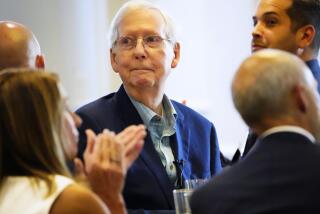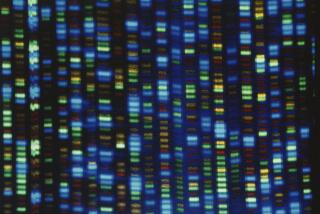‘Extraordinary Measures’ gets some parts of true story right
‘Extraordinary Measures’
Released Jan. 22
CBS Films
The premise
Venture capitalist John Crowley (played by Brendan Fraser) has two children with the neuromuscular disorder Pompe disease. The genetic condition, which is described as uniformly fatal in its most severe form, creates a deficiency of an enzyme that converts stored sugar -- or glycogen -- to usable glucose. Without that enzyme, the glycogen builds up in the body and damages the heart and other muscles. Searching for a way to help his children, John finds a scientist, Dr. Robert Stonehill ( Harrison Ford), who is developing a treatment.
The therapy on which he’s working includes genetic and molecular techniques that allow the body to use a replacement enzyme so it can process stored sugar, improving muscular function as well as heart, liver and lung function. John starts a foundation, raising millions of dollars to further the research, and the company he and Stonehill start is purchased by a large biotech company, Zymogen.
That company ultimately produces a commercial version of the replacement enzyme, using a simpler technique than Stonehill’s, that then enters clinical trials. To allow his children to participate, John quits the company so there won’t be a conflict of interest. The children begin to receive the new treatment as part of a “sibling trial” and almost immediately begin to experience a “sugar high” as the enzyme treatment takes effect.
Over several months, their heart, liver and lung function improves as does their mobility, though they remain in wheelchairs.
The medical questions
How rare is Pompe disease, and is it generally fatal in its most severe form? Is there a new treatment, based on the work described in the film? Would the children of a corporate executive at a company making the treatment be excluded from clinical trials because of a potential conflict of interest? Is a “sibling trial,” in which two genetically similar patients are tested to make direct comparisons, ever done?
The reality
Pompe disease causes generalized muscle weakness, enlarged heart, eating difficulties, failure to thrive, respiratory distress and hearing loss. A severe infantile form is estimated to occur in 1 in 40,000 live births, is usually diagnosed fairly quickly and is often fatal in the first year of life. The late-onset, or adult, form may be simply misdiagnosed as muscular dystrophy and never identified as Pompe disease. This milder form may not be fatal.
In real life, the Crowley children were diagnosed with the most severe form in infancy. In the film they were diagnosed later in childhood and might have been expected to have a somewhat milder, but still fatal, form.
Stonehill is a composite of scientists, including Dr. Bill Canfield, depicted in Geeta Anand’s book “The Cure,” upon which the film is based. The techniques used to create the replacement enzyme described in the film are being used, and a therapy is available.The research that was conducted by Stonehill in the film is still under investigation and is not yet in commercial use.
The enzyme, however, is very expensive, says Dr. Paul Fernhoff, medical director of the Lysosomal Storage Disease Center at Emory University School of Medicine, from $50,000 a year for an infant, up to $400,000 for an adult. Further, the company has had some production problems. John Crowley has created a new company, Amicus Therapeutics, that is trying to develop alternative oral treatments.
Clinical trials show that the treatment is usually effective, although some patients respond better than others, says Dr. Perry Shieh, co-director of the UCLA muscular dystrophy clinic. But it is not a cure.
The movie is fairly accurate in its description of how the replacement enzyme works, says Fernhoff. It’s absorbed by the cell’s lysosome (an organelle, or sac of enzymes, that digests large molecules) and breaks down glycogen to glucose.
As for potential conflicts of interest, they frequently arise in research and medicine, Shieh says, but he believes this should not automatically exclude someone from participating, especially if “all qualifications are met.” Fernhoff disagrees, pointing out that the U.S. Food and Drug Administration and institutional review boards, which oversee clinical trials, might fear that a family member so closely involved in a trial could bias the results.
A sibling trial, in which a pair of genetically related subjects are used to assess the effectiveness of a new treatment, makes some sense when studying a very rare disorder, though it would involve giving one sibling the real drug and the other child a placebo, Fernhoff says. The parents and siblings could not know which child was getting the real drug. With potentially fatal illnesses, however, the prospect of one child getting better and one child languishing may be too grim for parents and doctors. Thus, the use of a placebo would not be humane.
But in the movie, both siblings receive the replacement enzyme and supposedly see some response the morning after the first infusion. In reality, Fernhoff says, it would take six months to see an improvement from the enzyme; it would not work overnight.
In real life, Crowley’s children did both receive the drug and did both improve over several weeks. They are still alive and receiving the enzyme therapy.
Siegel is an associate professor at New York University’s School of Medicine and author of the e-book “Swine Flu: The New Pandemic.”






